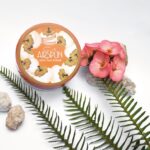Creating Professional Product Images for Online Stores
Introduction
In today’s digital age, having high-quality product images is crucial for e-commerce businesses to stand out from the competition and drive sales. High-quality product images can increase conversions, boost customer satisfaction, and ultimately lead to increased revenue.
According to a study by Google, product images account for up to 65% of all online shopping decisions [1]. Furthermore, research by Shopify found that products with high-quality images sell 12 times faster than those without them [2].
In this comprehensive guide, we’ll explore the importance of capturing high-quality e-commerce images and provide you with a step-by-step guide on how to create professional product images for your online store.
Planning and Preparation
Before creating any images, it’s essential to plan and prepare. This includes researching your target audience, understanding their needs, and gathering relevant information about the products you’re selling.
For example, if you’re selling outdoor gear, consider the types of terrain and activities your customers will be engaging in when choosing the right product images [3]. Similarly, for fashion e-commerce businesses, consider lifestyle shots that showcase how customers can style a particular outfit [4].
Choosing the Right Camera and Equipment
When it comes to capturing high-quality product images, the camera and equipment used are crucial. Here are some tips:
- Use a high-resolution DSLR or mirrorless camera with good low-light performance.
- Invest in a prime lens (around 50-100mm) for its ability to create sharp, detailed images with minimal distortion.
- Consider using a macro lens (around 60-100mm) for extreme close-up shots of small product details.
For example, the Canon EOS 5D Mark IV is an excellent choice for e-commerce photography due to its impressive low-light performance and high-quality image output [5].
Understanding Lighting
Lighting is one of the most critical aspects of product image photography. Natural light, artificial light, or a combination of both can create stunning images.
For example, softbox lights are popular among product photographers because they provide an even, diffused light that minimizes shadows and highlights [6]. Similarly, ring lights can be used to create slim, elongated silhouettes that add drama to product images [7].
Composing Your Shot
Composition is the backbone of any good image. Here are some tips:
- Rule of thirds: divide your frame into thirds both horizontally and vertically.
- Leading lines: use leading lines (e.g., stairs, paths) to lead the viewer’s eye to the product.
- Framing: use frames (e.g., archways, doorways) to create depth and add context.
For example, consider using a background that complements the product colors to enhance its visual appeal [8].
Editing Your Images
Post-processing is an essential step in creating high-quality product images. Here are some tips:
- Adjust brightness and contrast for optimal visibility.
- Crop or resize images to fit your specific needs (e.g., square, landscape) .
- Use noise reduction tools to minimize digital artifacts.
For example, Adobe Lightroom is a popular choice among photographers due to its powerful editing capabilities [9].
Conclusion
Capturing high-quality e-commerce images requires careful planning, attention to detail, and practice. By following the tips outlined in this guide, you’ll be well on your way to creating professional product images that showcase your products in their best light.
Remember, every great image starts with a solid foundation of planning, equipment, lighting, composition, editing, and storytelling.
References:
[1] Google Images Search Results
[2] Shopify Product Image Study
[3] Outdoor Gear Photography Tips | The Spruce Crafts
[4] Fashion Product Photography Techniques | Fashionista
[5] Canon EOS 5D Mark IV Camera Review – CNET
[6] Softbox Lights for Product Photography | Photographic Supply Company
[7] Ring Lights for Product Photography | Light Studio
[8] Background Colors That Complement Your Brand – HubSpot
[9] Adobe Lightroom CC Tutorial | YouTube

Photo by Nery Montenegro on Unsplash
You Also Might Like :



Pingback: E-Commerce Performance Evaluation Metrics Success